Contents
The bush-type cherry variety Brusnitsyn is widely used in areas with harsh climatic conditions due to its winter hardiness and self-fertility. The unpretentious, compact plant is quite productive, and begins to bear fruit when most of the berries have already departed.
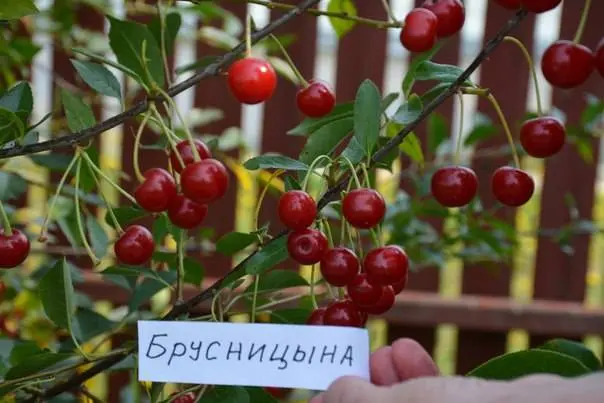
History of breeding
The bush cherry variety Brusnitsyn is widely distributed in amateur gardens, but is not included in the State Register. In the Urals, the variety is considered a successful and durable example of folk selection. It survives the harsh Ural winters and is therefore very popular in the region. Recently, the Brusnitsyn variety has begun to spread widely in other areas, along with the expansion of the range of undemanding bush cherries.
Description of the culture
Brusnitsyna cherry grows in the form of a sprawling bush, which reaches a height of only 2 m. From strong and flexible skeletal branches over the summer, 30-35-centimeter shoots depart, densely covered with bright green foliage of medium size. The edges of the elongated leaf are serrate, the apex is pointed. By the end of spring, the branches are covered with white foamy flowering. The corolla is small, about 2 cm. When ripe, the berries generously load the branch.
The fruits of this variety are medium-sized, rounded, intensely red. Weight – 4-6 g. The berries are juicy, with pulp of a rich red hue. The taste of berries in bush cherry Brusnitsyn is refreshing sweet and sour.
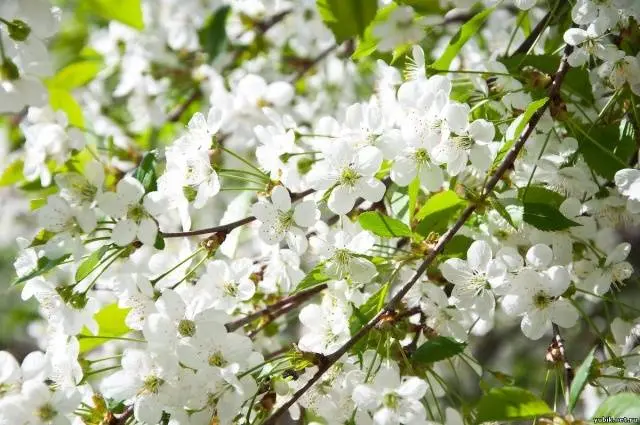
Cherries are great for growing in northern areas. According to the reviews of gardeners about Brusnitsyn’s cherry, who experimented with planting it in the Arkhangelsk region, the variety bears fruit well in harsh regions.
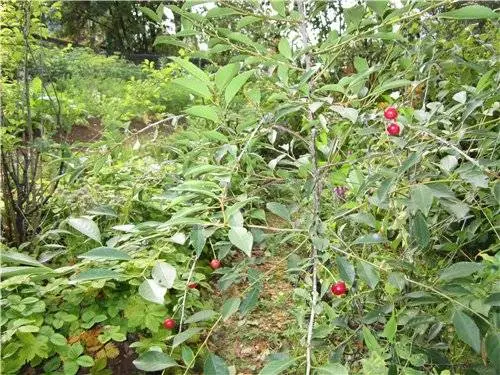
Features
The features of the unpretentious, resistant and productive Brusnitsyn variety are clearly reflected in the qualities of the tree itself and juicy berries.
Drought resistance, winter resistance
The bush form of Brusnitsyn’s cherry is able to tolerate low temperatures, but 2-3-year-old seedlings should be protected with spruce branches. Bush-type cherries are also drought-resistant due to their well-developed root system. Although when planting in the southern regions for the Brusnitsyn variety, it is better to choose a place with light penumbra, and not in the sun.
Pollination, flowering period and ripening period
Cherry Brusnitsyn of late ripening blooms in the third decade of May. Inflorescences are formed directly on the shoots. A feature of Brusnitsyn’s cherry variety is the long viability of pollen. Experts call the period up to 2-3 weeks. Due to self-fertility, 40% of the berries on the tree of this variety are formed. With pollinators planted nearby with other varieties of cherries, the number of ovaries increases. Gardeners also note that near another bush-type cherry (for example, Mayak), Brusnitsyna pleases with a very plentiful harvest. The berries turn red, fill with juice and are enriched with sugars in August.
yield, fruiting
Brusnitsyn’s cherry seedling gives the first berries in the third or fourth year after planting. From one adult bush, subject to the requirements for care, 15-20 kg of berries are harvested. Petioles of berries are located directly on the shoots, which turn red from the fruit by the end of summer.
Scope of berries
The fruits of the Brusnitsyn cherry variety are universal. Juicy berries are suitable for fresh consumption. All kinds of homemade preparations are created from them, frozen or dried in electric dryers.
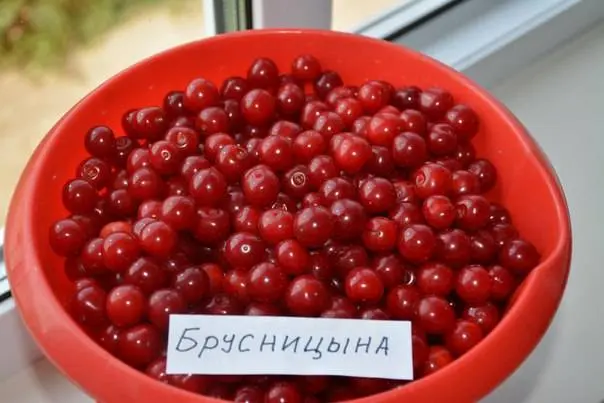
Disease and pest resistance
The cherry variety Brusnitsyn has strong immunity. Only in years with favorable conditions for the development of fungal diseases, the culture is partially affected by coccomycosis and moniliosis. From the attacks of garden pests, it is worth carrying out the usual early spring prevention. To destroy the foci, wintering insects in the garden, they remove the fallen leaves, cut off the damaged branches and burn them. The soil near the cherry bushes is loosened with a flip of a thin layer, up to 6-7 cm.
Advantages and disadvantages
According to the main characteristics, the Brusnitsyn cherry variety is an excellent find for amateur gardeners who grow trees and bushes in harsh climatic conditions with a short summer. It has the following advantages:
- high yield;
- refreshing, balanced acid and sweet taste of berries;
- self-fertility;
- plant compactness;
- resistance to low temperatures;
- the ability to painlessly endure short-term dry periods;
- good immunity.
In the reviews of gardeners, of the shortcomings of the Brusnitsyn variety, only the predominance of the sour taste of berries in comparison with other varieties is indicated.
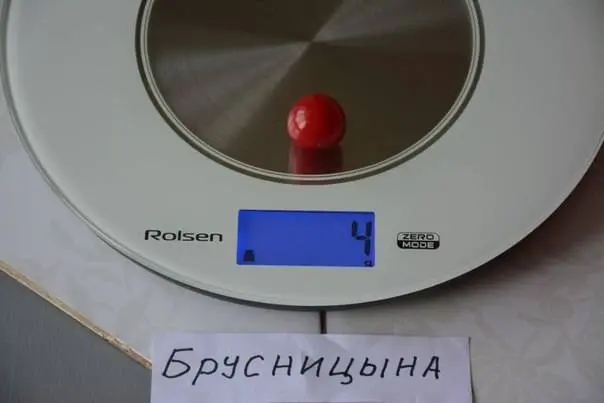
Features of landing
For the successful cultivation of Brusnitsyna cherries, a suitable place and planting period are chosen.
Recommended dates
Cherry Brusnitsyn takes root well, planted in early spring, after warm weather sets in. This statement is relevant for seedlings with open roots. If the horticultural farm offers planting material in containers, Brusnitsyn seedlings can be transplanted into open ground until mid-September.
Choosing the right place
For cherries, the southern or southwestern side of the garden is selected, where there will be enough lighting for it. In the central regions, the Brusnitsyn variety tree is placed in a spacious sunny place. In the south of the country, undersized bush cherries are best planted in light partial shade.
It is important when planting cherries to observe the following recommendations:
- Places with stagnant water or low-lying areas are not suitable for planting Brusnitsyn cherries.
- If there are no hills, they make raised ridges up to 0,5 m high, and seedlings are planted on them;
- Sandy and loamy soils are the best for cherry crops;
- On heavy soils, sand, peat and humus are added to the wells;
- Clay and humus are added to peat soils;
- The optimal composition of the soil for planting Brusnitsyn seedlings should have neutral acidity. Acidic soil is alkalized with lime.
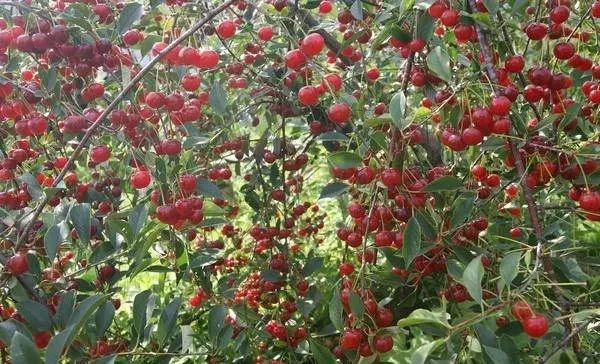
What crops can and cannot be planted next to cherries
Brusnitsyna is self-fertile, but the yield will increase if other varieties of cherries or cherries grow in the garden. Nearby you can plant low plants: currants, honeysuckle, hawthorn. Raspberries, gooseberries, nightshade are undesirable neighbors, as they can become a source of the spread of fungal diseases. Tall apricots, apple trees, lindens, any coniferous trees are also undesirable to be planted next to cherries.
Selection and preparation of planting material
Before planting Brusnitsyn’s cherry, the roots and trunk are carefully inspected at seedlings, discarding dried and damaged specimens. The height of the trunk to the branches is at least 60 cm, the thickness is within 2 cm.
The branches should be elastic, long, with well-developed buds. Before planting, the roots are soaked in a mixture of water, clay, and growth stimulant (optional).
Landing algorithm
Fertilizers are added to the required substrate in the hole for planting a seedling of Brusnitsyn’s cherry variety: horse humus, 500 ml of wood ash, 1 tbsp. l. potassium chloride and 2 tbsp. l. superphosphate.
Next steps:
- A peg is hammered in, to which a tree will subsequently need to be tied;
- A seedling is installed in the planting hole and sprinkled with the prepared substrate. The root neck remains above the surface;
- After watering the hole, the ground is mulched;
- The branches are cut by one third.
Culture aftercare
Like any fruit and berry crop, Brusnitsyn’s cherry needs care. To obtain high yields, it is necessary to carry out the following activities in a timely manner:
- In the absence of rain in June and July, watering is necessary to fill the berries and support the tree, which lays the buds of future flowers during this period.
- In August, cherries are not watered if there is natural precipitation. Otherwise, shoots will actively grow and weaken the tree before winter.
- Brusnitsyna cherry shoots grow very quickly. During spring pruning, the bush is shaped and the crown is thinned out. In autumn, root shoots are removed;
- loosen the soil shallowly.
- The Brusnitsyn variety is fertilized before flowering and during the formation of fruits with organic or mineral ready-made complexes according to the instructions.
- Before winter, the seedling is protected from frost and rodents with spruce branches.
You can learn more about the rules for pruning bush cherries from the video clip:
Diseases and pests, methods of control and prevention
Diseases/Pests | Evidence | Methods of struggle | Prevention |
Moniliasis | Branches and leaves are brown | Treatment with copper preparations in spring and autumn | Destruction of diseased branches, collection of leaves in autumn |
Kokkomikoz | Brown-red rounded spots on the leaves | Treatment with fungicides | Spraying in the spring with copper sulphate or Bordeaux mixture |
destroyed | Rarely appears as scabs on berries | 2 treatments in June after 15 days with fungicides Skor, Horus, Raek, Kaptan | Spraying in the spring with copper sulphate or Bordeaux mixture |
aphid | Leaves at the tops are twisted, with a colony of aphids | Soap treatment | Destroy garden ants, aphids |
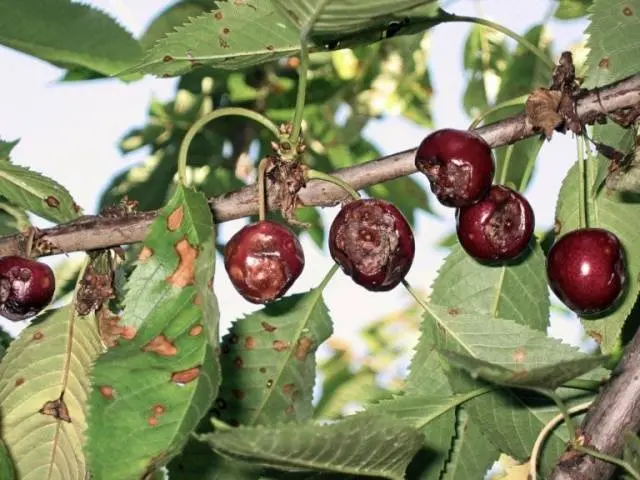
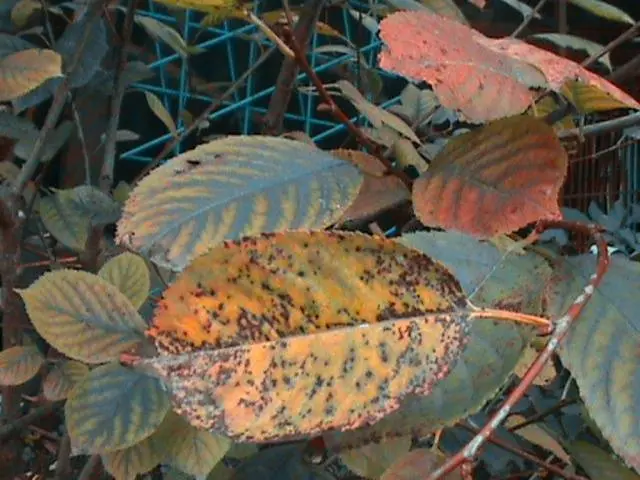
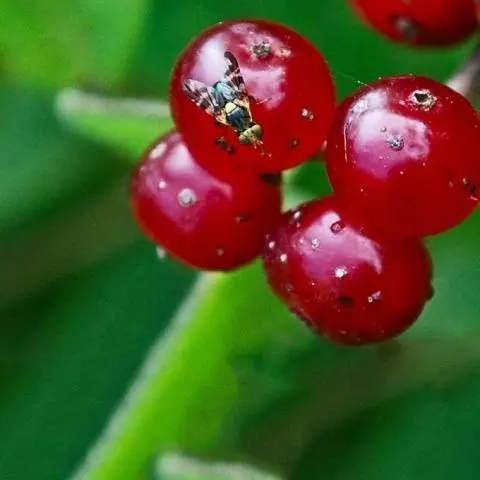
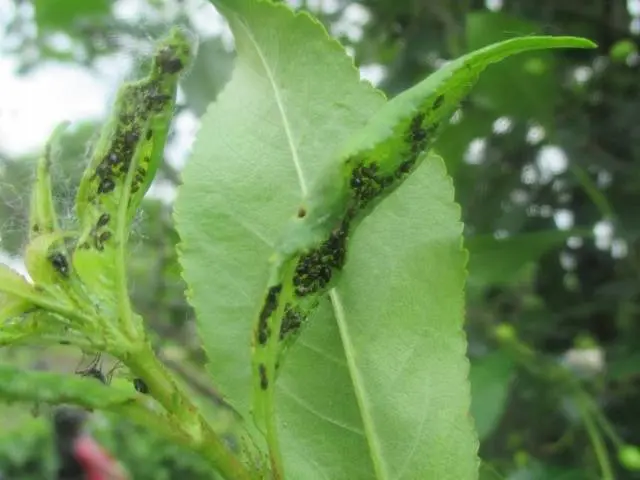
Conclusion
Cherry Brusnitsyn is characterized by resistance to diseases and endurance in cold climates. Self-fertility and high productivity are special attractive features of this variety. With minimal care, gardeners get an excellent harvest of fragrant and tasty berries.









